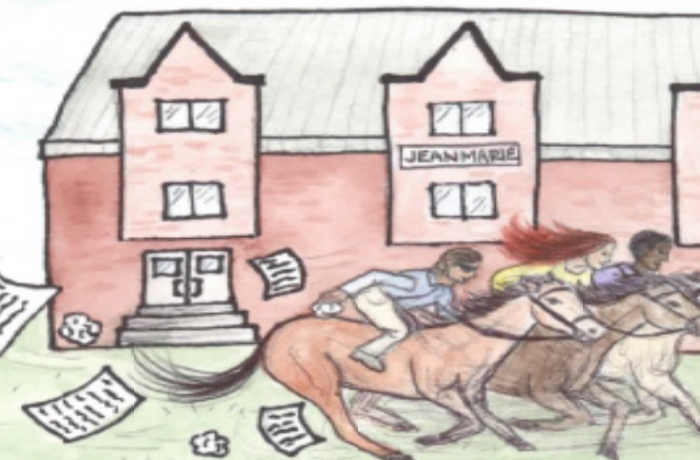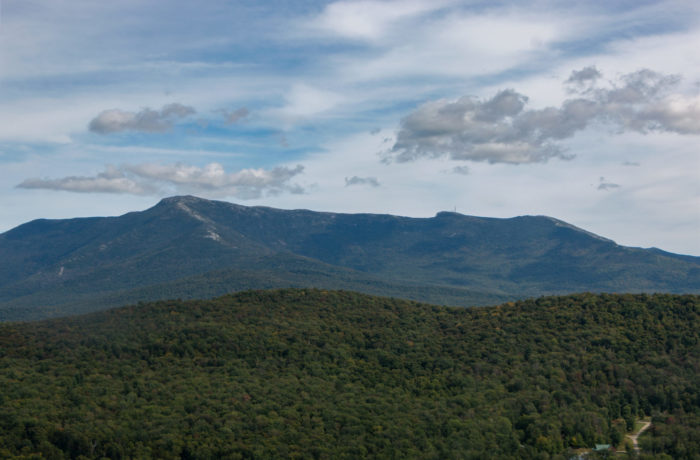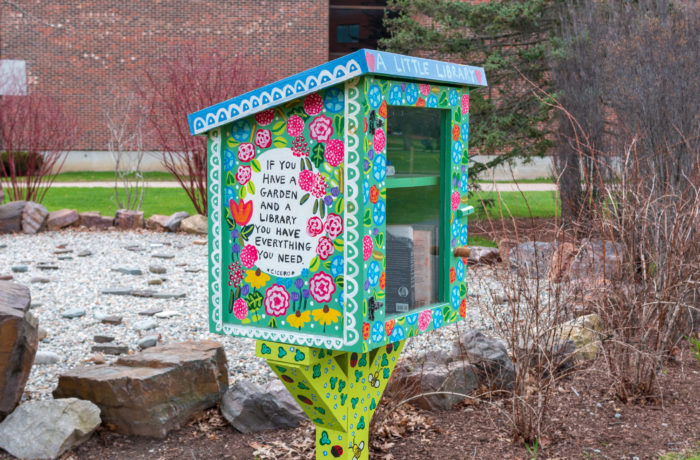
Any regular of Cafe Cheray knows Sanka Smailhodzic. You can recognize her by her motherly smile, friendly disposition, and light, warm Bosnian accent.
What you probably don’t know is that Sanka was once a refugee and that her family narrowly escaped the ethnic cleansing of Bosnian Muslims in the mid 1990s.
Things began to turn violent in Yugoslavia after the death of President Josip Broz Tito. More than ten years later, Croatia and Serbia declared independence from Yugoslavia. The following year, Bosnia and Herzegovina declared independence. Serbians within Bosnia then attacked the capital of Bosnia, Sarajevo, and so began a series of conflicts between the Serbians, Croatians, and Bosnians, a civil war that lasted until 1995.
The ethnic cleansing of Bosnian Muslims at the time is compared by some historians to the genocide of World War II.
On a recent afternoon, after her day’s work at the Cafe, Sanka Smailhodzic and her daughter Ordina, a behavioral specialist at the Howard Center in Burlington, sat down to talk with a reporter about their journey from their country of origin to one that was foreign to them. Ordina was just seven when she, her mother, brother, and paternal grandmother were forced to flee Bosnia and enter the world of refugees.
For the Smailhodzic family, life was good in Yugoslavia before the war. It was a communist country, but one where, at least for the Smailhodzic’s as a middle-class family, everything seemed to be in place.
“It sounds funny when you say ‘we lived in a very nice communist country,’ right?” said Ordina. “But there was universal healthcare, everybody had a home, everybody had paid vacation and family leave. It didn’t feel like an oppressed country or a country that was controlled by the “dictator.” For people from my mom’s generation, life was pretty good.”
“We really had a nice life– we had houses, cars, the kids would play like all kids play,” Sanka said, nodding in agreement. “We didn’t believe it when the war started going on.”
As a seven year old, Ordina didn’t recognize the signs of war until they literally reached her school yard.

“April 2, 1992, we were all in school in Stolac, the city where we are from,” Ordina said. “We had a huge statue of the president at the time in front of our building. I don’t know if they were Serbian forces that came and bombed the statue while all the kids were in school. It was chaos. I was in art class, and all the windows came crashing down. My brother was in third grade so he was on a floor above me. There were men with guns drawn on the trees around the building, the teacher was in complete panic, and all the parents must have heard because all of these trucks came to evacuate us out of the building. But my brother and I wouldn’t leave until we found each other and we kept missing each other in the hallways. Finally we were able to find each other and go outside and our parents were there.”
Still, there was hope that this violence wasn’t becoming their new reality.
“The following day all the parents had their kids go back to school because everybody was convinced that this war is not going to happen,” Ordina said. “After that day we never went back to school again and things really started ticking up.”
Even as the statue outside Ordina’s school was bombed and war began to become more and more of a reality for the Bosniaks, it didn’t seem real. Only a handful of days after the bombing incident, Sanka’s husband and a few other men made a plan to get the women and children out of their town. The plan was that the women and children would sleep in all black, with their shoes on, and be ready to make their their escape late at night. Sanka, still in disbelief that this was happening in her homeland, dressed herself and her children in pajamas for a typical night of sleep. Her husband had them change. Sanka and her children then traveled up a mountain to a neighboring town, in the dark, to get on trucks and travel to safety.
Still thinking that all of this couldn’t be happening, Sanka turned around and lead her children home. Her husband, shocked to see them return, escorted them back up the mountain and to the neighboring town, insisting they leave for safety while he stayed behind to join Croatian forces and fight.
It was only when Sanka heard gunshots and bombs going off as she and her children were loaded into trucks and taken away from their home that she knew.
Sanka’s husband fought alongside Croatians, yet these were the very people who eventually rounded him and other Muslim Bosnians up and put them into concentration camps.
“Most of those Croatian soldiers were our next door neighbors and people that we knew and people that, when we go back, we still see everyday on the street,” Ordina said. “So he was basically captured by his friends, co workers, neighbors, not just my Dad but hundreds of thousands of men.”
Approximately 100,000 people died in the war, and it’s believed that about 80 percent of the fatalities were Bosniaks according to the United States Holocaust Museum.
Sanka, her children, and her husband’s mother had escaped to Croatia before the brunt of the war. They didn’t know if her husband was alive, if he was still fighting in the army, or if he was in a concentration camp. One evening Sanka was watching the evening news and saw her husband’s face in a group of people rescued by the Red Cross from a concentration camp. Her children and her husband’s father didn’t even recognize the man on the screen.
Tensions between Croatians and Bosnians had risen dramatically, and it was an incredibly dangerous journey for Sanka to visit her husband where the Red Cross had taken him to rehabilitate his health. Her mother-in-law was worried her grandchildren would end up parentless.
Sanka traveled on a boat to the island her husband was on, surrounded by men in Croatian army uniforms. She was terrified for her life.
“As soon as I boarded the ferry, my mother in law came to mind,” Sanka said. “About 300 Croatian Soldiers were on the ferry, all headed to Mostar/ Hercegovina to fight the Bosnian Army. I found a seat on the floor and pulled all my bags near me and tried to blend in as much as possible. I remember thinking this is going to be a long ferry ride. It was an all night journey.
“I told myself not to speak to anyone in the fear that the soldiers would recognize I was Bosnian and kill me. In the Balkans it’s easy to tell what region/country you are from by your accent.
Eventually Sanka realized a few men were watching her, and she pretended to sleep. They approached her asking, “are you Remzo’s wife?”
Remzo is Sanka’s husbands’ name.
“I about threw up when they said this,” Sanka said. “I thought they were going to kill me.”
It turned out they were fellow Bosnians who had once worked with Remzo, only dressed in Croatian uniforms as a disguise for their own safety. Sanka made it safely to her destination and was able to see her husband.
“He couldn’t believe that I made it all the way to him,” said Sanka. “It was the saddest and happiest moment.”
When Sanka was reconnected with her husband again, after he’d been in a concentration camp for months, he’d lost some 50 pounds and was almost unrecognizable.
“When I was looking at him it was like he was dead and came out from six feet under the ground,” Sanka said. “I thought I knew him when I saw him, but [I remember] thinking, I don’t know him.’”
He had lost so much weight that he was severely malnourished, which allowed him to be one of a limited number of men removed from the camp by the Red Cross, who could only remove individuals with a severe medical need from the camp at the time.
“My Dad talks a little bit about the concentration camp but not a lot,” Ordina said. “In three weeks he didn’t have any water or food, and then you were kind of just beaten whenever they felt like to do that. They were eventually allowed to have some food and they would give you boiling hot water. If you didn’t drink it all you would get beaten. So you would have skin just like coming off of your face because it’s like boiling hot water. But you take what you can get to survive.”
The perspective of what exactly happened during the war is different for many Bosnians, Croatians, and Serbians, something Sanka and Ordina were quick to point out.
“This is a matter of perspective,” Ordina said. “If you ask somebody who was Croatian they might have a different perspective of what happened, but in our particular town, the goal that everybody feels like was trying to be accomplished was to ethnically cleanse [the area] from Bosniaks [Bosnian Muslims] and to make that part of Croatia.”
According to Ordina, the three mosques in her hometown were bulldozed, street names were changed and homes were invaded in an effort to remove traces of Bosnian Muslims.
The Smailhodzic Family Today
The Smailhodzic family has been making return trips to Bosnia for years now, and although the war is over, the tensions amongst people are still present. Most recently Sanka returned to care for her father who was ill.
“Today there is basically a lot of segregation,” Ordina said. “They [Croatians] have their students go to school in the morning, and the Bosnian students go to school in the afternoon. They say that they speak Croatian, where we say that it’s Bosnian. A lot of the political offices that are held are by the Croatians, and one was head of the concentration camp that a lot of my family members were in. A lot of the local people will say it’s still war for them. We might not be fighting with guns but you’re fighting with all this propaganda that’s against you and you don’t really have the means to do anything about it.”
Yet for the Bosniaks, according to Sanka and Ordina, many still are hopeful.

“I’m proud of the people over there,” Sanka said.
“For me it’s kind of the simple ways of living, people are just happy with what they have,” Ordina said. “We’re all here and everybody’s safe and I’m sure they have their moments at night or whenever those moments come up of war and tragedy but you could never tell when you see them walking down the street.”
After Sanka’s husband was taken in by the Red Cross, he went through an approximately six month application process to move with his family to the United States. They were taken in by a Christian church in Essex Junction, Vt. Having barely escaped the ethnic cleansing being spearheaded by Christians in their home country, the irony of being aided by Christians was not lost on the Smailhodzics.
“There were still very fresh wounds for my Dad to take the leap of faith and say, no, not everybody is like this,” Ordina said of her father. “Let me understand, let me sit at church. We used to take English classes at the church here, and people would come and help us, and there was no problem and there was ability for all of us to exist . For them to have their religious holidays and their views, and us to have ours. I think that starts with understanding, and to differentiate that there’s lots of bad people out there, but there’s lots of good people in this world.”
The United States took in 169,000 Bosnian refugees during the time of the Yugoslavian civil war according to Aljazeera America. In 2015, there were 21.3 million refugees across the globe. In 2016 the UN Refugee Agency had information about 4.9 million Syrian refugees globally.
The executive order President Trump signed on Jan. 27 decreased the number of refugees that would enter the United States in fiscal 2017 to 50,000 and put a hold on the entrance of any Syrian refugees into the country. Since Trump’s inauguration and the travel ban disallowing Syrian refugees from entering the country, refugees who had applied for asylum are waiting in refugee camps.
Of the current Syrian refugee crisis in light of her own experience, Sanka said “I see the United States as loving and caring, but I see some people are not welcome anymore.”
“If you think about the process to come into the United States legally, it is one of the hardest immigration processes to get through,” Ordina said.
Today it takes between a year and a half and two years for a refugee to make it through the screening process in order to enter the United States.
For Sanka and Ordina, they felt problems both in Bosnia and across the world would be helped if people simply researched these issues of contention and spoke to people directly involved.
“Taking the opportunity to get to know people and put your differences aside is the best way to cope,” Ordina said.
For Sanka, she’s simply thankful for her family’s safety and happiness.
“I would really like to send a message to all the young people here– you have to be thankful,” Sanka said. “You’re waking up every morning having a warm shower, warm house, you can have breakfast. A million, million kids around the world don’t have it. It’s really important to be thankful.”
“Unfortunately today, there are many stories like ours and even worse ones,” Sanka said. “We hope this story helps others gain perspective on the current climate regarding refugees. No one wakes up one day and decides to leave the only home they knew and move across the world, where they don’t speak the language, understand the culture, etc. But everyone deserves a safe, healthy, and nurturing environment.”


